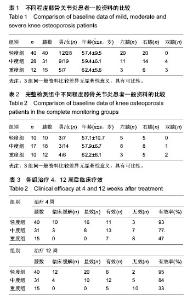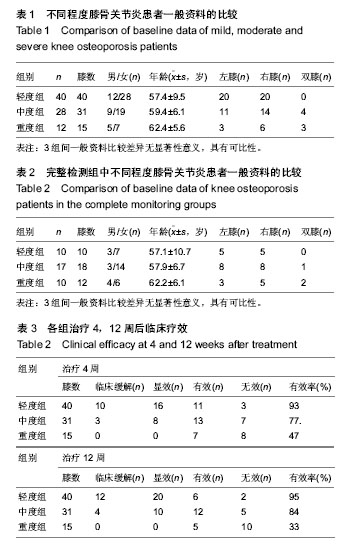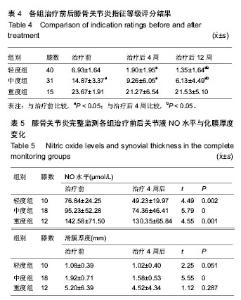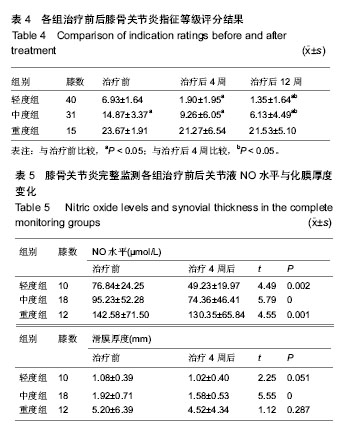| [1] Pereira D,Peleteiro B,Araujo J,et al.The effect of osteoarthritis definition on prevalence and incidence estimates: a systematic review. Osteoarthritis Cartilage. 2011;19: 1270-1285.
[2] 杨林,郭艾.一氧化氮在骨关节炎发病中的作用[J].中国矫形外科杂志,2009,17(7):518-519.
[3] 肖睿,唐强,蔡程,等.玻璃酸钠治疗膝骨关节炎的临床观察[J].中国矫形外科杂志,2005,13(3):198-200.
[4] Kim SB,Kwon DR,Hyun Kwak H.Additive effects of intra-articular injection of growth hormone and hyaluronic acid in rabbit model of collagenase-induced osteoarthritis. J Korean Med Sci.2010;25(5):776-780.
[5] Shimizu M,Higuchi H,Takagishi K,et al.Clinical and biochemical characteristics after intra-artilcular injetion of the treatment of osteoarthritis of the knee: porspective randomized study of sodium hylauronate and corticosteroid .J Orthop Sci. 20l0;15(1):51-56.
[6] 郭盛君,马玉峰,杜春林,等.自拟健步汤外洗治疗寒湿痹阻型膝关节骨性关节炎的疗效观察[J].中国医药导报,2012,9(4):111-113.
[7] Minami S,Okazaki T,Tanaki T,et al.A study of the effect of intra-articular injection of SLM10(sodium hyaluronate) on osteoarthritis of the knee.Jpn Pharmacol Ther.1993; 21 (suppl.):565-579.
[8] Hochberg MD,Altman RD,Brandt KD,et al.Guidelines for the medicalman agement of osteoarthritis: pact II, Osteoarthritis of knee.Arthritis Rheum.1995;38(13): 1541-1546.
[9] Lawrence JS.Rheumatism in population.London: Wiliam Heinemann Med.Books LTD.1997;76(56):53-67.
[10] Pereira D,Peleteiro B,Araujo J,et al.The effect of osteoarthritis definition on prevalence and incidence estimates: a systematic review. Osteoarthritis Cartilage. 2011;19(3): 1270-1285.
[11] Farrell AJ,Blake DR,Palmer BM,et al.Increased concentrations of nitrite in synovial fluid and Serum samples suggest increased nitric oxide synthesis in rheumatic diseases.Ann Rheum Dis.1992;51(11):1219-1222.
[12] Fernandes JC,Martel-Pelletier J,Pelletier JP.The role of cytokines in osteoarthritis pathophysiology. Biorheology. 2002;39(2):237-246.
[13] 金大地,孙炜,王吉兴,等.一氧化氮合酶抑制剂对骨性关节炎的潜在治疗意义[J].中华骨科杂志,2002,22(6):367-371.
[14] 郝亚荣,邱波,刘世清,等.透明质酸钠对兔骨关节炎软骨诱导型NO合酶基因表达的影响[J].中华风湿病学杂志,2005,9(1): 405-408.
[15] 姚永.透明质酸联合糖皮质激素关节腔注射治疗膝关节炎疗效分析[J].中国医药科学,2011,1(22):82-84.
[16] Mototani H,Iida A,Nakajima M,et al.A functional SNP in EDG2 increases susceptibility to knee osteoarthritis in Japanese. Hum Mol Genet.2008;17(12): 1790-1797. |



